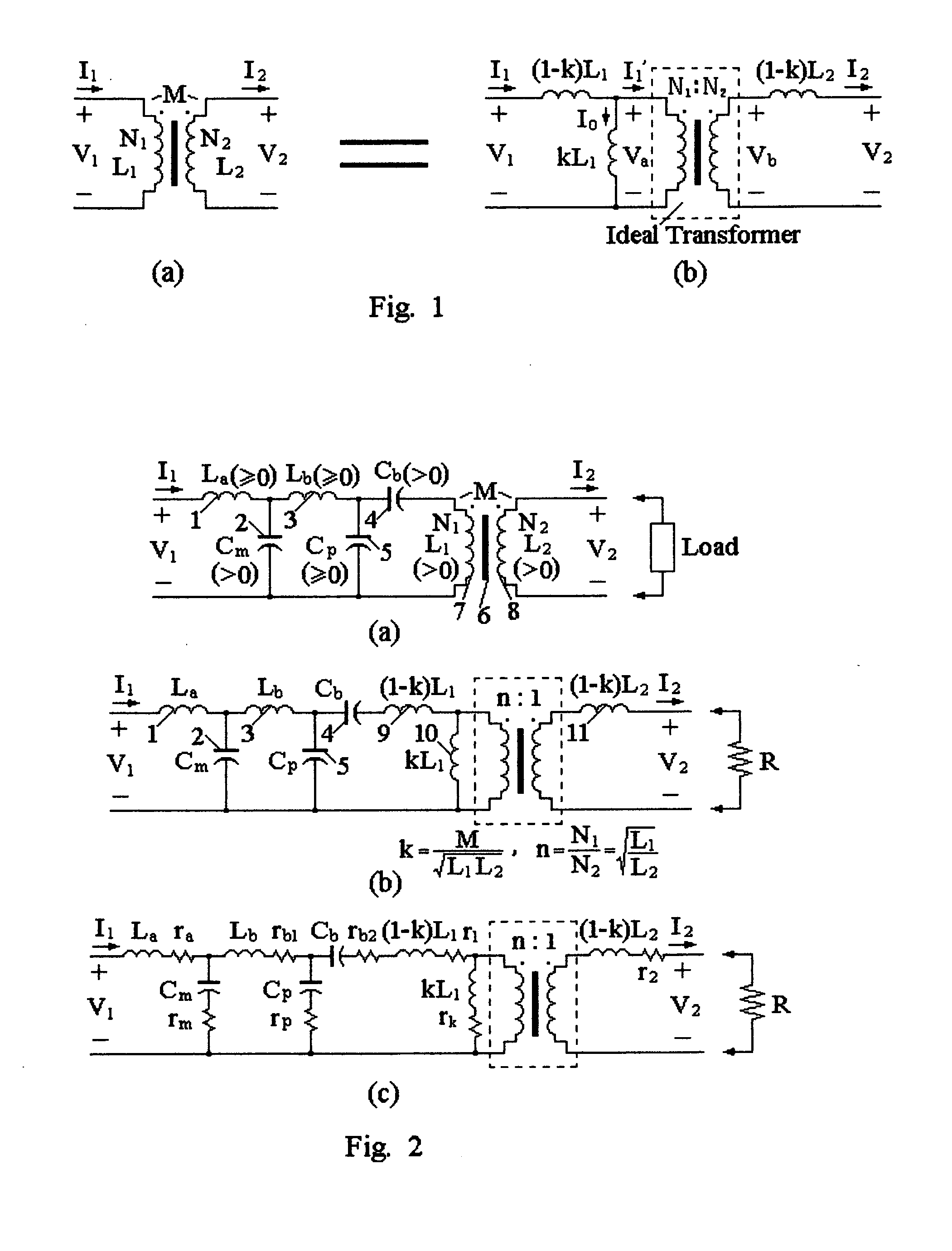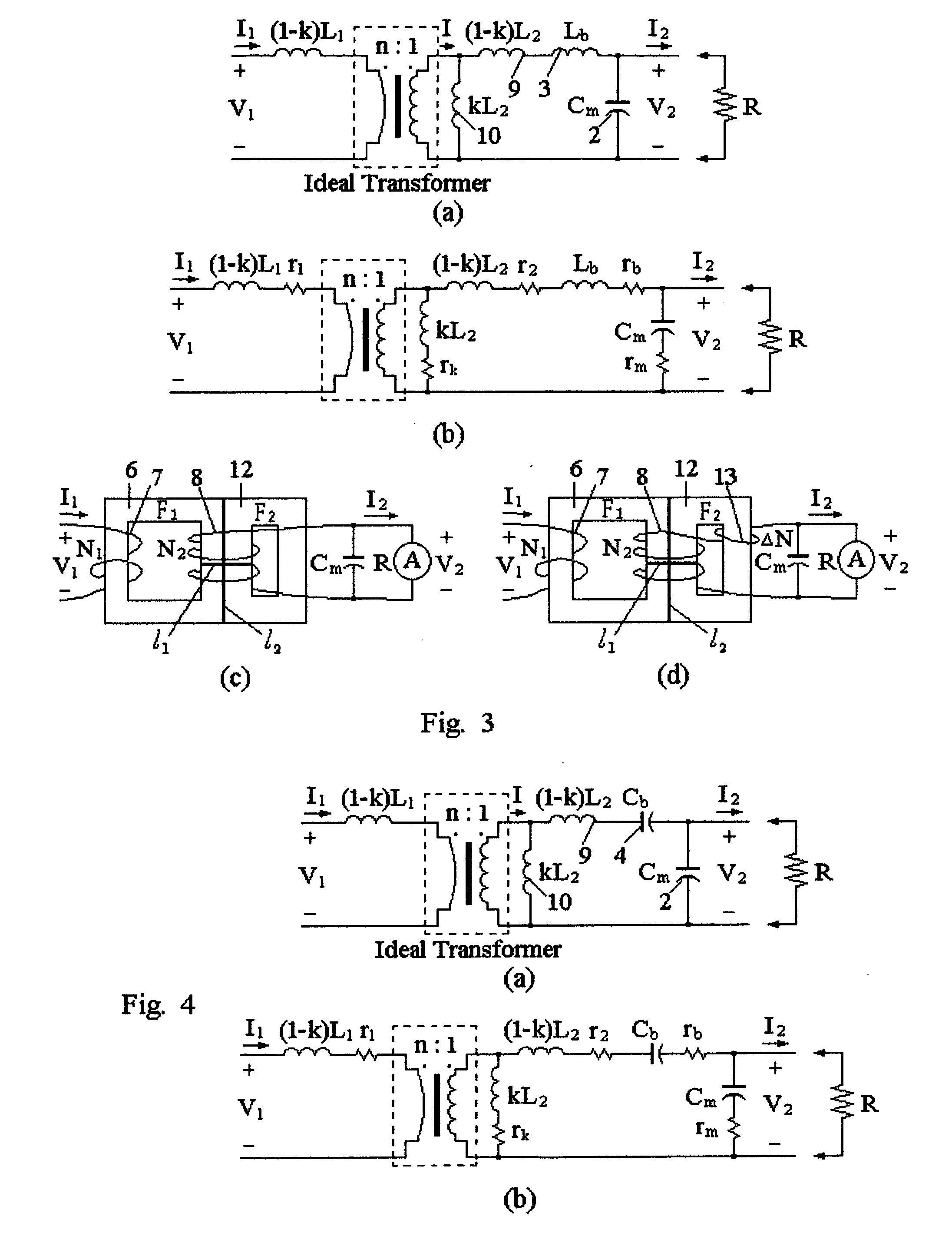Methods and configurations of lc combined transformers and effective utilizations of cores therein
- Summary
- Abstract
- Description
- Claims
- Application Information
AI Technical Summary
Benefits of technology
Problems solved by technology
Method used
Image
Examples
Embodiment Construction
[0018]The general circuitry arrangement of the LC combined transformer is illustrated as in FIG. 2(a), with the load not included. Circuit components 1 and 3 are inductances La and Lb, with inductance value >0 meaning positive, and the value=0 meaning short-circuited. Circuit components 2, 4 and 5 are capacitances Cm, Cb and Cp, with capacitance value >0 meaning positive (including C→+∞, short-circuited), and the value=0 meaning open-circuited. 6 is the core magnetic circuit of the mutual inductor, 7 its primary winding N1 (with inductance L1>0), and 8 its secondary winding N2 (with inductance L2>0) and, 6,7 and 8 constitute a mutual inductor or conventional transformer. All the circuit components and the mutual inductor herein can be real devices, although their magnitudes or values may be worked out respectively by one or more components based on the principles of series-parallel connections, with their application equivalent for the definition herein, and with the corresponding p...
PUM
 Login to View More
Login to View More Abstract
Description
Claims
Application Information
 Login to View More
Login to View More - R&D
- Intellectual Property
- Life Sciences
- Materials
- Tech Scout
- Unparalleled Data Quality
- Higher Quality Content
- 60% Fewer Hallucinations
Browse by: Latest US Patents, China's latest patents, Technical Efficacy Thesaurus, Application Domain, Technology Topic, Popular Technical Reports.
© 2025 PatSnap. All rights reserved.Legal|Privacy policy|Modern Slavery Act Transparency Statement|Sitemap|About US| Contact US: help@patsnap.com



